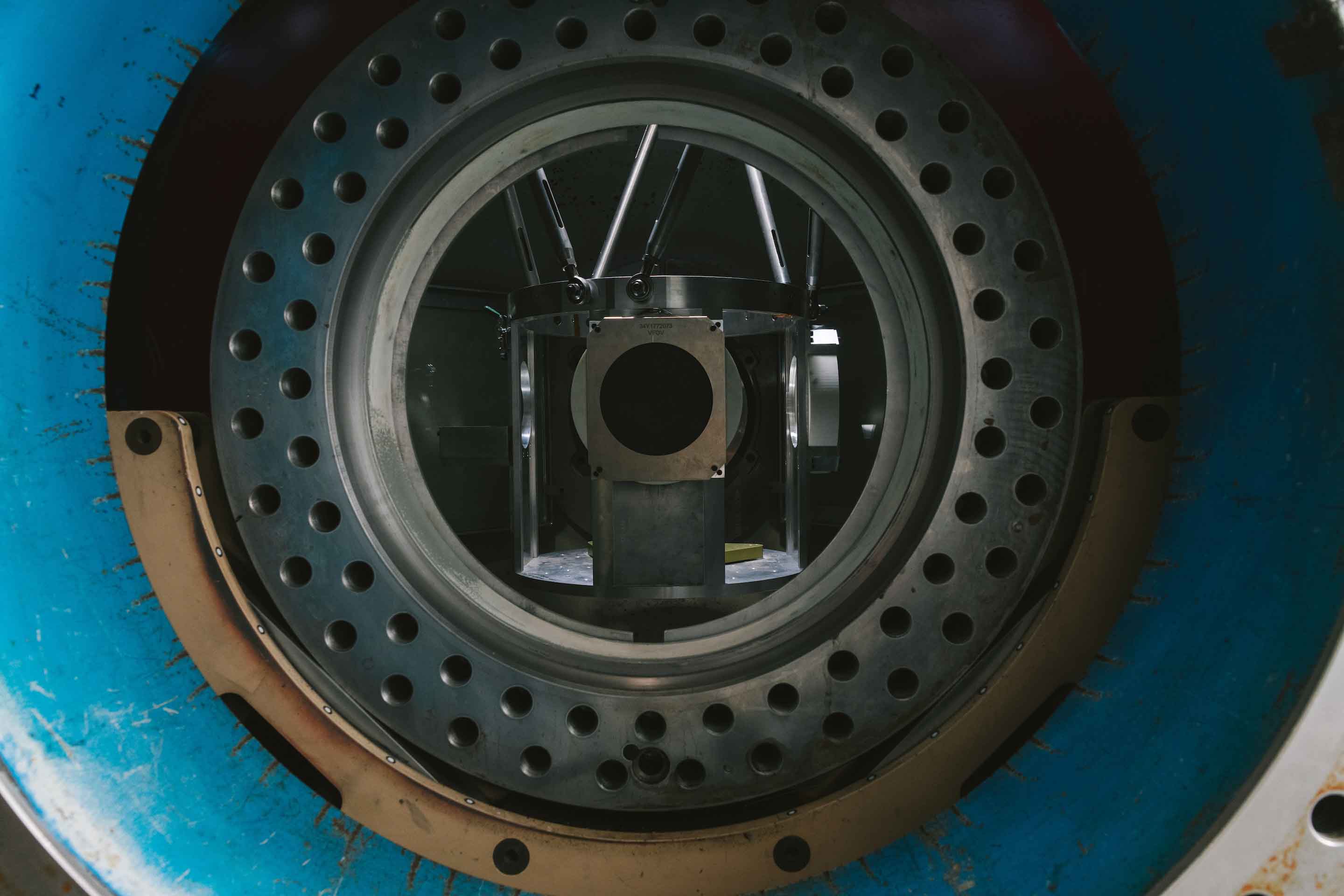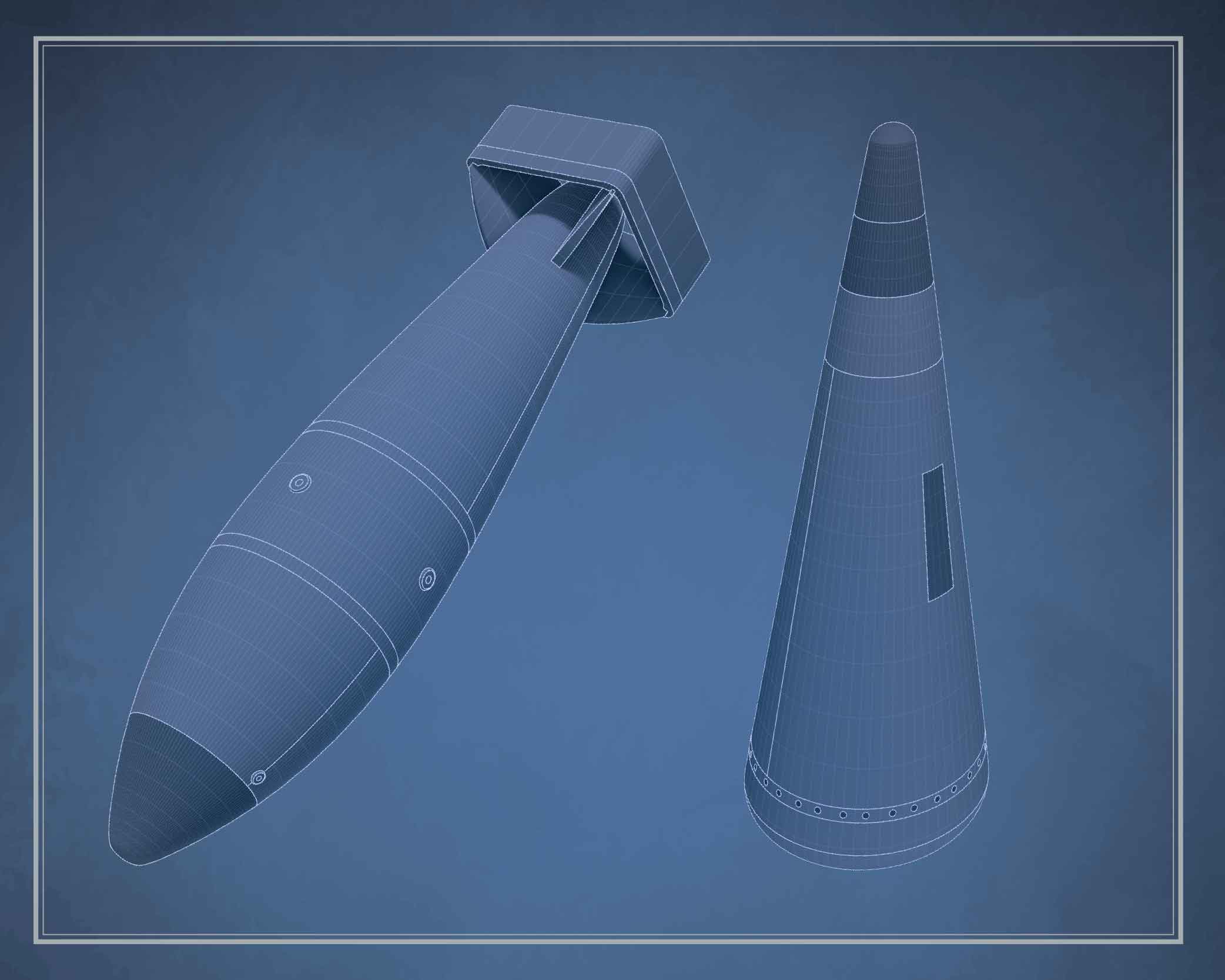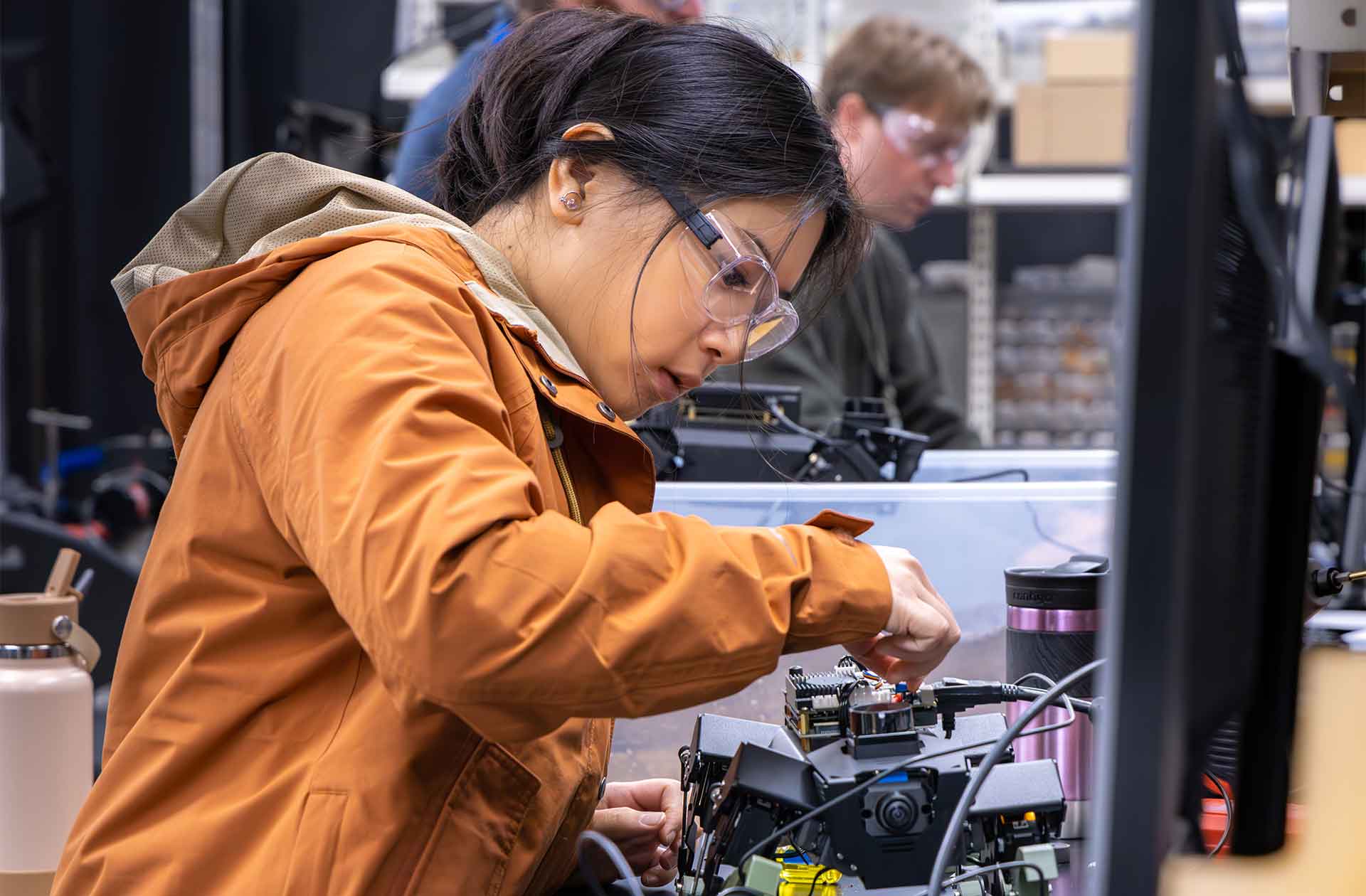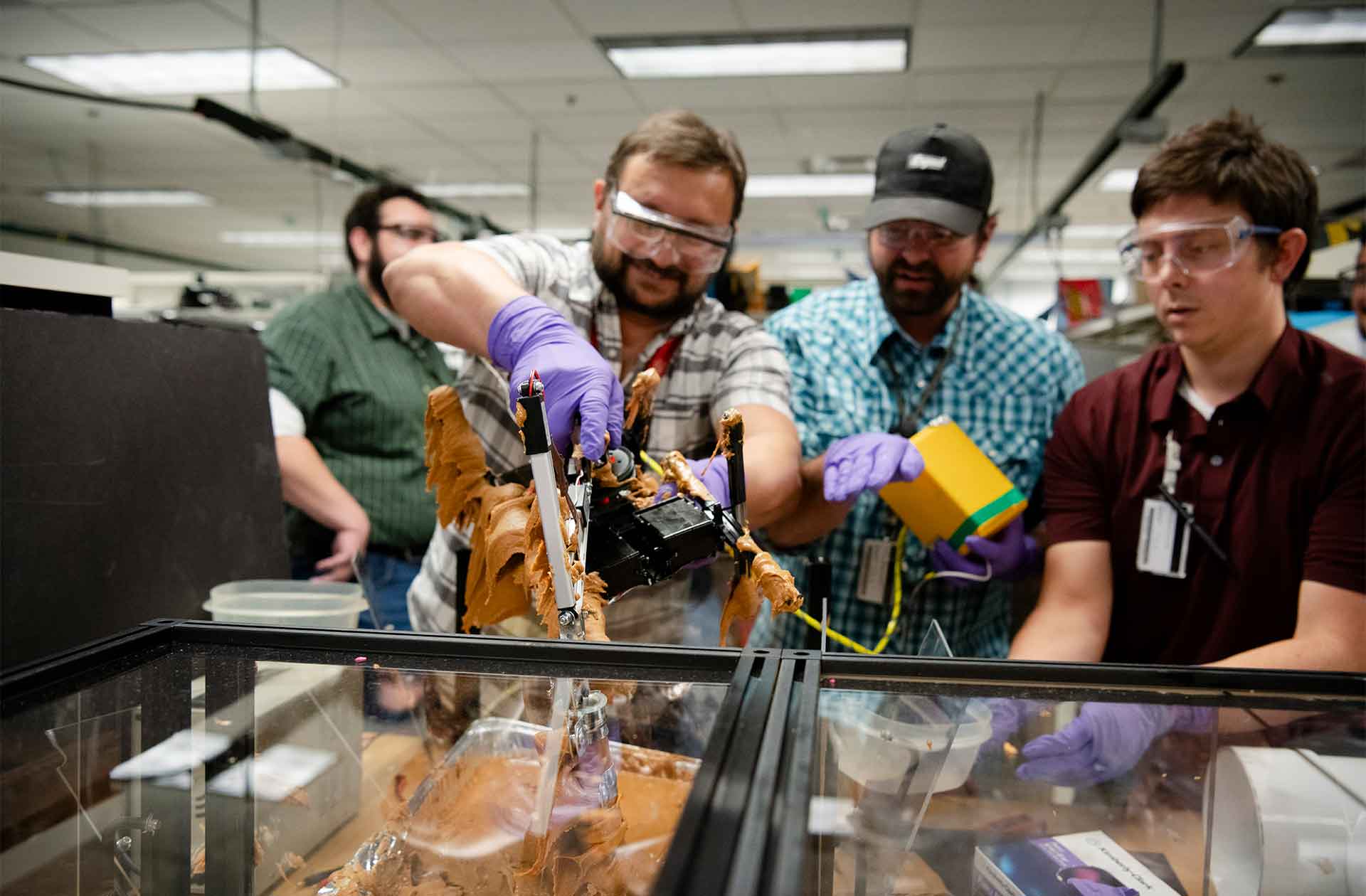Manhattan legend turns 100
John Tucker celebrates a century.
- Sierra Sweeney, Communications specialist

Wearing a suit and a bolo tie, John Tucker blew out the candles on his detonator-shaped cake. “You really put the icing on my 100th birthday cake,” Tucker said to his audience at the May 8 private celebration at Los Alamos National Laboratory.
The crowd included members of the Detonator Science and Technology group and other Laboratory leadership who reflected on Tucker’s 40-plus years of service to the national defense mission and his contributions to detonator science, which continue to support the safety and performance of the United States’ nuclear weapons stockpile.
“Since the Manhattan Project, Tucker has made numerous contributions to the Weapons Programs, and his legacy continues to carry the day with two major references he authored,” said event organizer Daniel Preston, referring to the Los Alamos Detonator Catalog and Los Alamos Detonator History, both of which are still in use today. “Our work today parallels those who came before us, and learning about the contributions of one of the founding fathers of detonator science is inspiring and motivating.”
Recognized as a key member of the Manhattan Project, Tucker’s contributions to detonator science are unparalleled. As a Naval officer during World War II, he served at Los Alamos and on the Pacific Island of Tinian as a member of Project Alberta, which ensured an atomic bomb could be successfully dropped by aircraft. For his part, Tucker designed bomb-handling equipment and wrote disassembly, inspection, testing and assembly check sheets. He personally selected the fireset that armed Fat Man, the bomb used over Nagasaki on August 9, 1945.
After the war, Tucker returned to Los Alamos to lead the development of the Laboratory’s Detonator Firing site, now known as TA-40. He spent the remainder of his career at the Lab, officially retiring in 1982 but staying active as a consultant for another decade. ★








